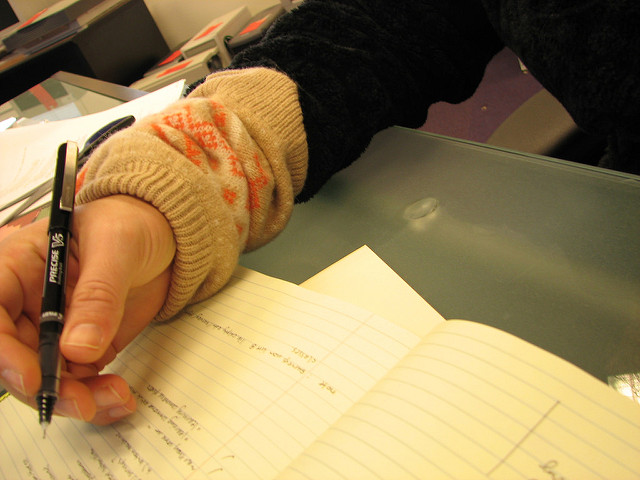Tracking Tasks

You will never know what you have to get done or what you want to get done unless you track it. You may have a vague idea of what you want to get done if it was a decision you made a couple days ago, and you may even know some of the things you need to accomplish on your larger projects, but if you don’t find a way to track everything you will find you loose track of more and more until you get lost and find you have dropped a lot of things you wanted to get done.
When I was in High School I found it easy to keep track of what homework I had and what assignments I needed to get done. When I got to college the projects were more lengthy and I needed to keep track of more things. As life has progressed, the things I have needed to keep track of have grown in number and complexity. In order to deal with this complexity I use a task tracking system.
For some people a simple note pad or post-it note works for them. They either cross the item off or throw the paper away when all the tasks are done. That’s easy, doesn’t cost much and it pretty portable. You don’t have to worry about it ‘running out of battery’ or being ‘charged’ and it’s pretty ubiquitous.
There are some downsides, however.
It’s difficult to search for what you have done in the past and you cannot create reports or see how you have done in getting things off your plate very easily without employing another tool, like another piece of paper or a spreadsheet.
An alternative to the post-it note system involves using an electronic note taking app or even a text file on your computer. There are all kinds of different formats out there now days, including a the popular todo.txt format. You simply keep track of the tasks you want to get done throughout the day by putting them into this text file and then processing them. It’s simple and straight forward. You can put the file in a place where all your devices can access it and now it’s something you can sync between all the places you work. You could print it out if you think you are going to be somewhere you cannot access your phone or other electronic device. Then when you get back you can check it off.
Overall, not a bad compromise between paper and a full-blown task management system. You have the flexibility of using it either electronically or on paper. Unless you are constantly moving completed tasks from there to another system, however, it will still suffer from the progress problems that paper has. You would still need to keep track of how much you can get done each day and how well you do on some days vs others. One advantage, however, is that if you do copy a task from one file to another, you can search the grand master file for tasks and if you mark down when you complete them (instead of just deleting them) you can search and show when you completed the task.
The last category of task capture tools includes a plethora of task management apps. There are so many of them out there that it’s hard to not hit one if you wave a stick in the air. Remember the Milk, Things, Omni Focus and Toodleo are just a few of the apps out there that people use to capture their tasks. Each has their purpose and the features are different. Prices vary widely as well and it’s hard to know what one to use. When you get right to it, however, what you really want is to track what you need to get done, when you want to have it done by and any notes you need in order to take care of the task. Anything more than that is just extra functionality.
I personally use Things. I can schedule tasks to show up on certain days, I can have repeating tasks and there is a spot to put notes and due dates. Everything I need is there and while I admit there are times when I start looking around at other solutions, I eventually come back to Things because it is pretty simple and I don’t need much more than that.
I do wish there was an easier way to get some of the information out of it via some kind of API or other reporting features, but I’m willing to live without that kind of feature for the price and the ease of use.
But your milage may vary. Maybe you don’t need all the details and a text file may be just the thing you need. Perhaps that’s not enough so instead you need something with a bit more power like Omni Focus.
No matter what you solution, you need to track tasks. Don’t be afraid to experiment and try something for a month. Trying something for just a week is not enough. You need to give it time to sink in and to give yourself time to learn the tool. If after a month it’s still not working for you, try another tool until you find something you like and that works with your process.
When evaluating a tool make sure that it meshes with how you naturally work. It need to capture tasks in a way that is easy for your. It need to feel natural when you go to process those tasks and it needs to capture enough information that you can execute on any task that comes into your system in a way that is comfortable. You may never find a tool that matches you exactly, but if you can find one that comes close, stick with it and you will find you become more productive than every.
Once you find the capture tool you like, most of the rest of the process will be that much smoother.
The image is ‘thank you 80s. thank you leg warmers’ by emdot. You can find it on flickr

Comments